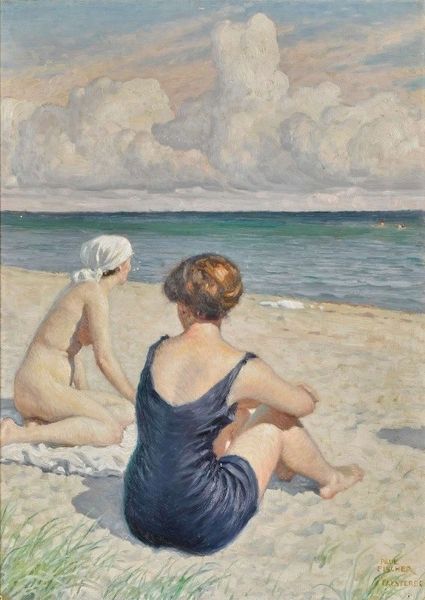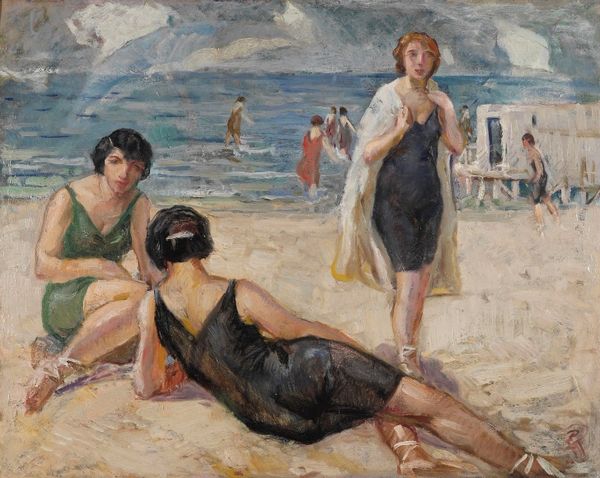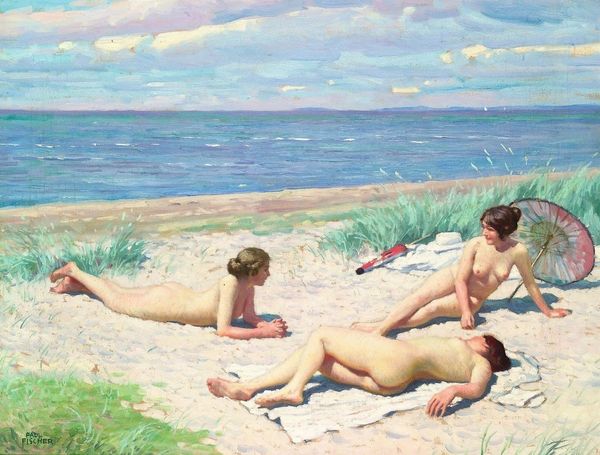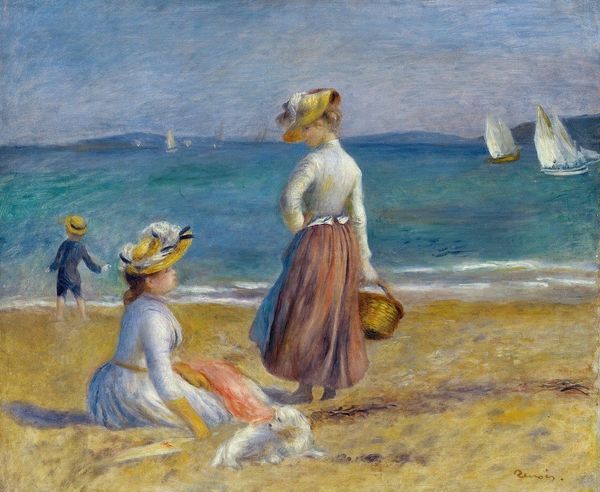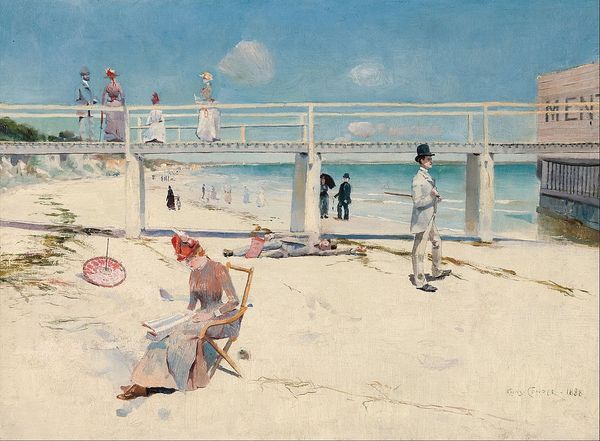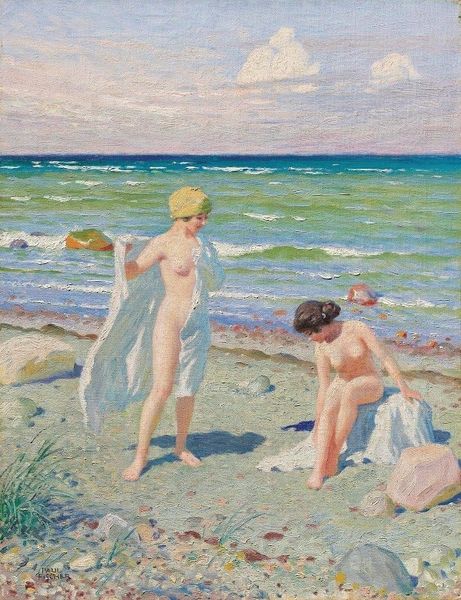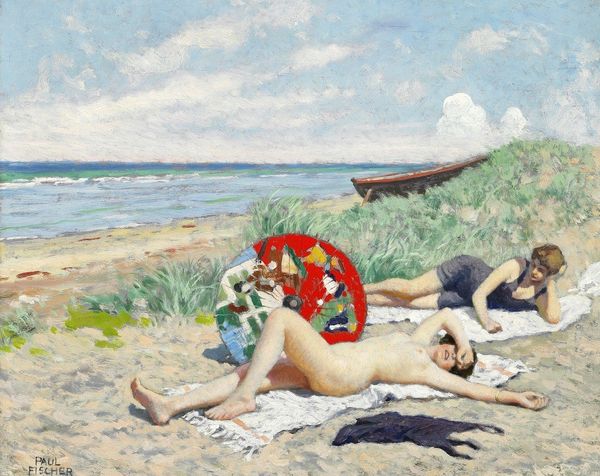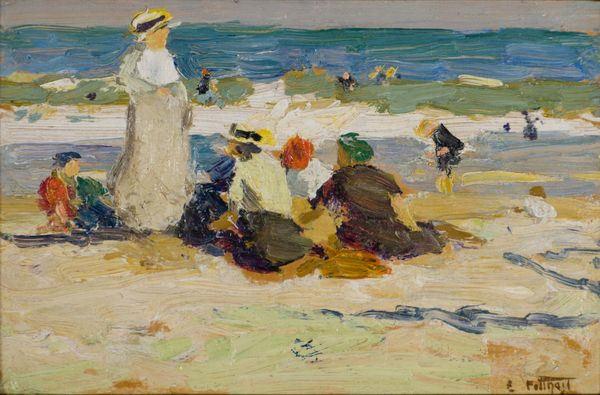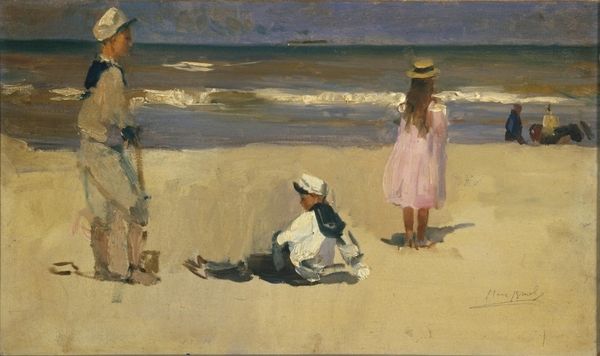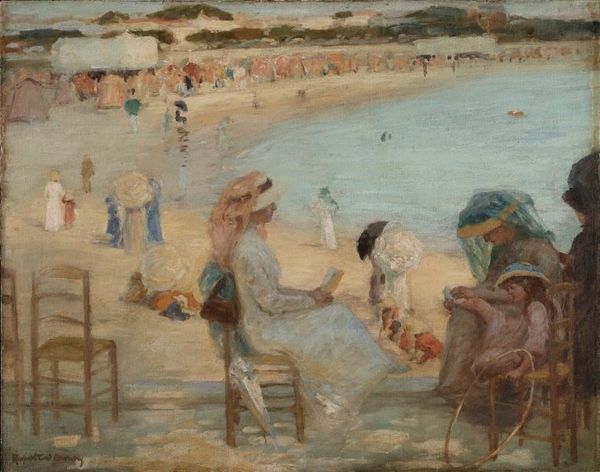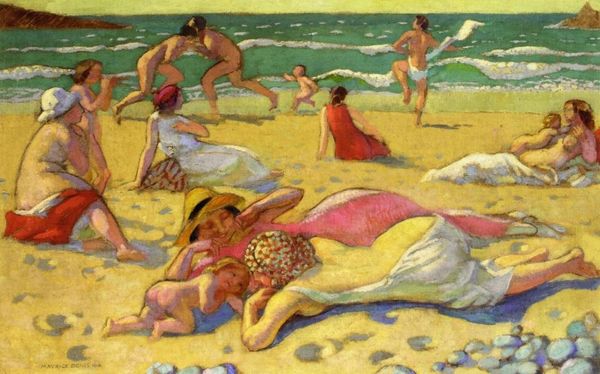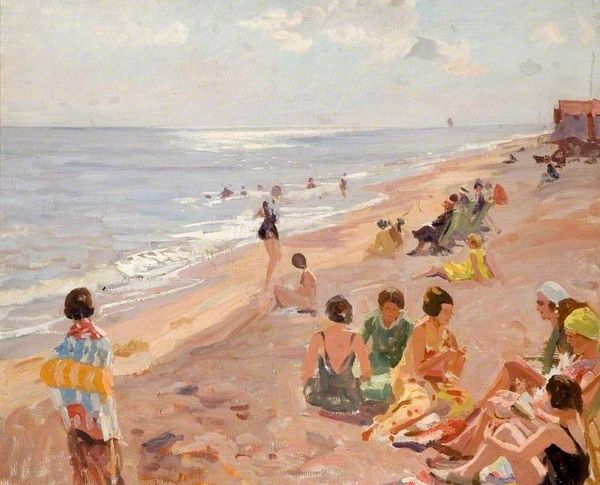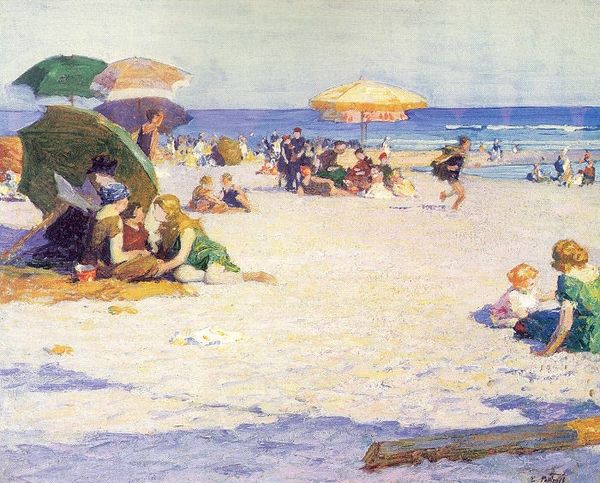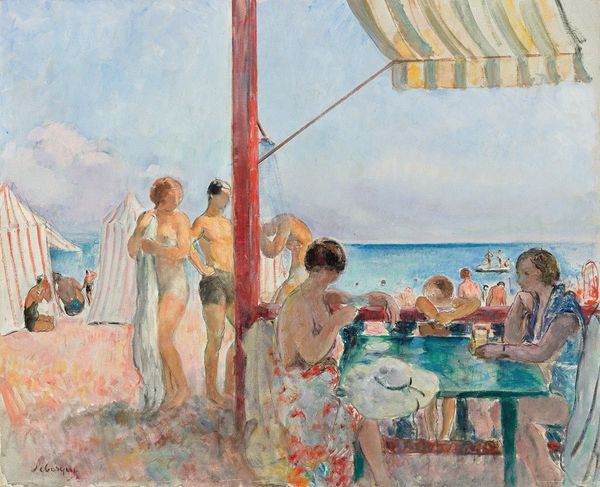
Copyright: Public Domain: Artvee
Editor: This is Paul Fischer's "On the beach, Falsterbro" from 1909. It's an oil painting showing figures on a beach in what seems like leisurely summer scene. The brushstrokes are quite visible, which adds to the sense of immediacy. I am curious, what do you see in this piece beyond just a pretty beach scene? Curator: I notice first how the artist uses materiality and processes to capture a moment of emerging social shifts. Consider the clothing. While certainly appearing leisurely to our eyes, the clothing indicates a social dance occurring during this period. We can imagine what fabrics make up the outfits: where they were sourced, what industrial processes were necessary to manufacture them, who benefitted from that industry? And how these articles mediate these women’s experiences of both freedom and confinement. Editor: That’s fascinating. So you're saying that their clothes tell a story about labour and social change? Curator: Precisely. Notice, also, the beach itself as a site of recreation and a natural space exploited for leisure. What is the physical materiality of the location itself offering? Think about where Fischer chooses to plant himself; in painting "en plein air," or "in the open air," how is he thinking about his relationship to leisure and nature as both an insider and observer? Editor: It's almost like the beach is another raw material that gets transformed for enjoyment, just like the cloth that becomes clothing. The whole process reflects particular societal values! Curator: Yes. Examining the means of production and leisure provides a potent lens for interpreting art beyond its mere aesthetic value. Editor: This has really opened my eyes. I usually focus on composition and color but analyzing the material aspects reveals so much more about the time period and cultural values. Curator: Exactly. Always consider the processes and materiality behind a piece to understand its deeper social implications.
Comments
No comments
Be the first to comment and join the conversation on the ultimate creative platform.
